Span 66 cm / 26 in
Weight 16 g / 0.56 oz
The Bayraktar TB-2 is an unmanned combat aerial vehicle from Turkey that first flew in 2014. It is capable of flying long range missions at medium altitudes. Among the countries operating the TB-2 are except Turkey itself Romania, Albania, Kosovo, Poland, Ukraine, Azerbaijan, Turkmenistan, Kyrgyzstan, Pakistan, Bangladesh, the Maldives, United Arab Emirates, Qatar, Morocco, Tunisia, Libya, Ethiopia, Somalia, Djibouti, Burkina Faso, Rwanda, Togo, Niger, Nigeria, Mali. Wingspan measures 12 m (39 ft 4 in), length 6.5 m and max. take-off mass is 700 kg (1,540 lb). The powerplant stems from Rotax (model 912-iS, 100 hp) and endurance is one day and three hours. The TB-2 is capable of carrying a wide variety of smart bombs, missiles, mortars and guided rockets.
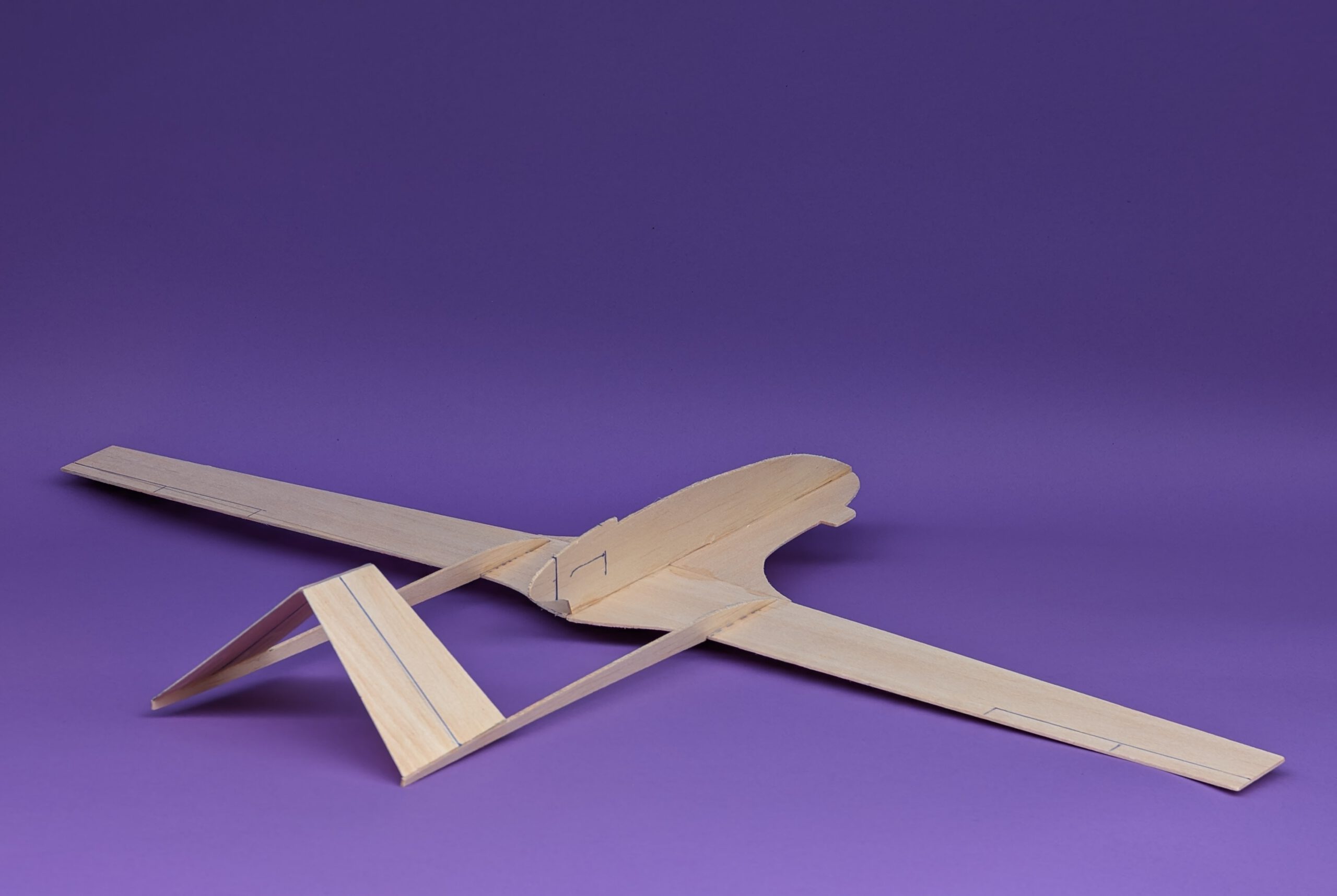
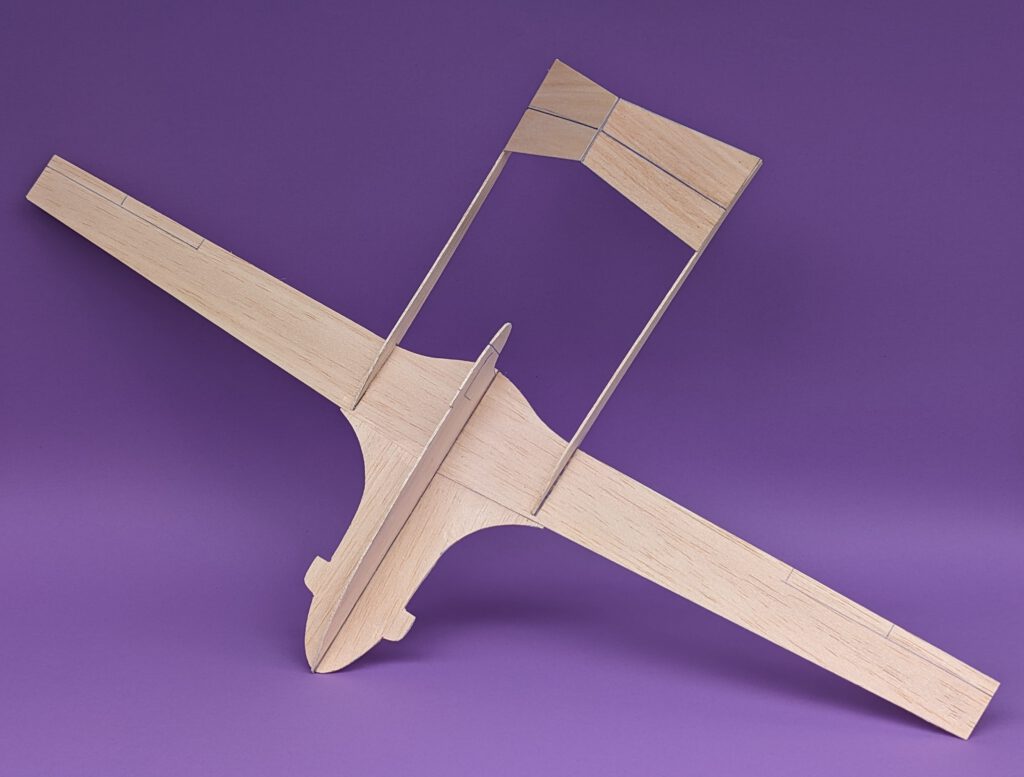
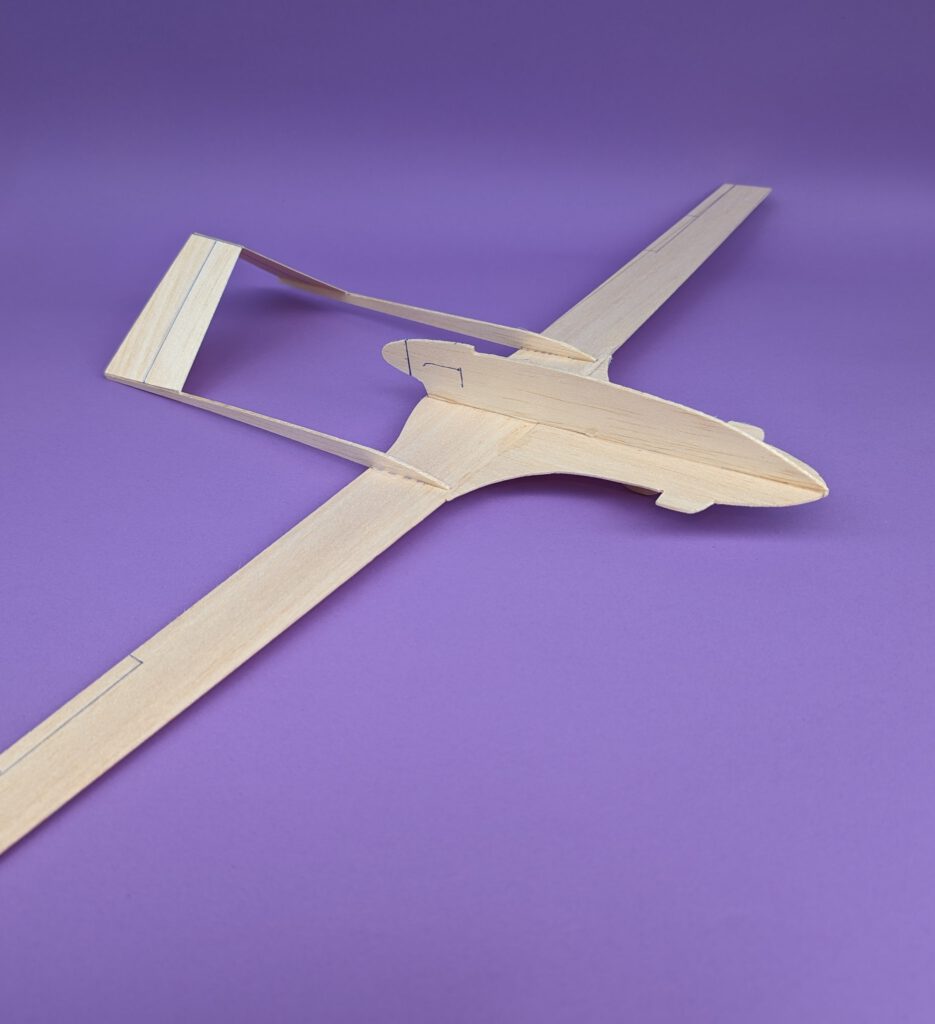
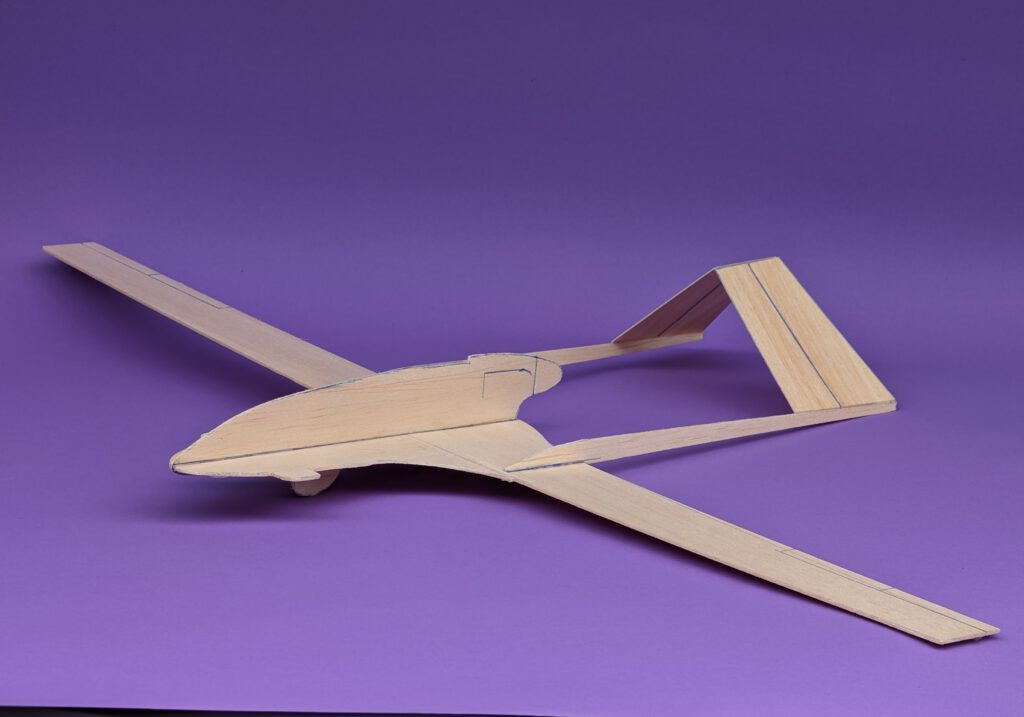
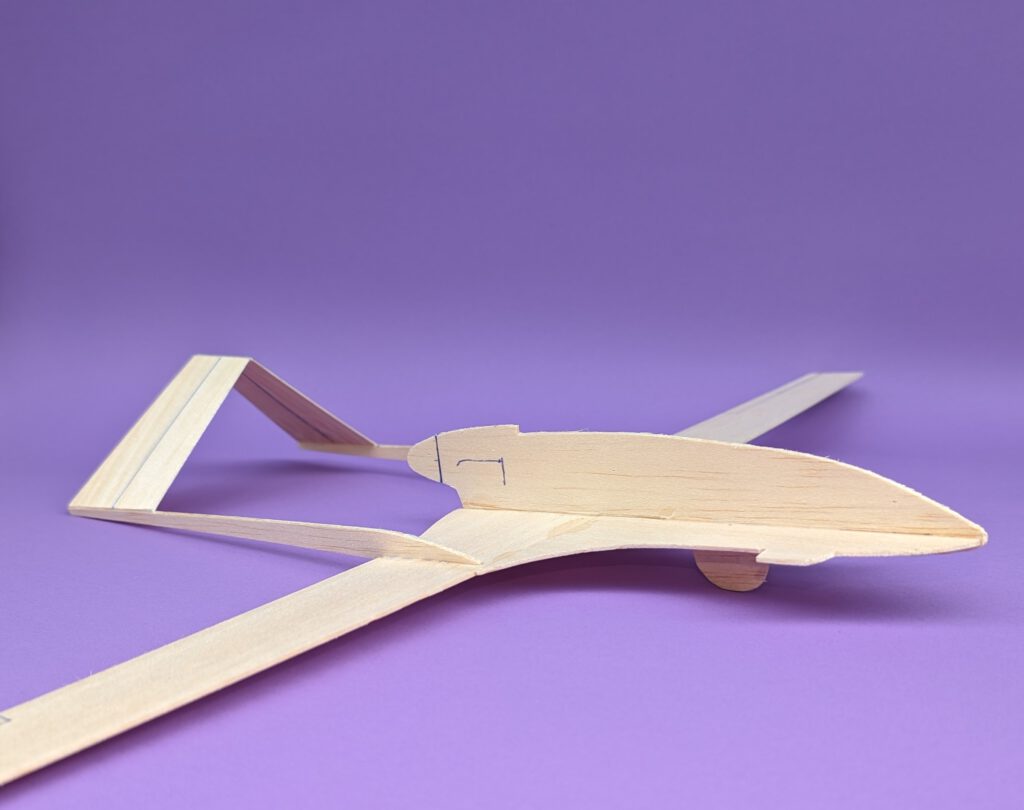
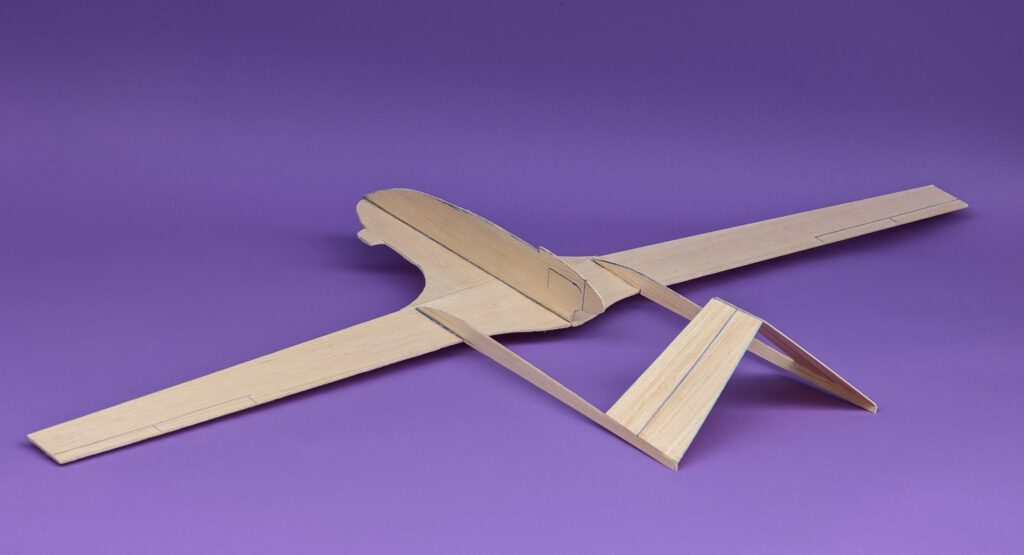
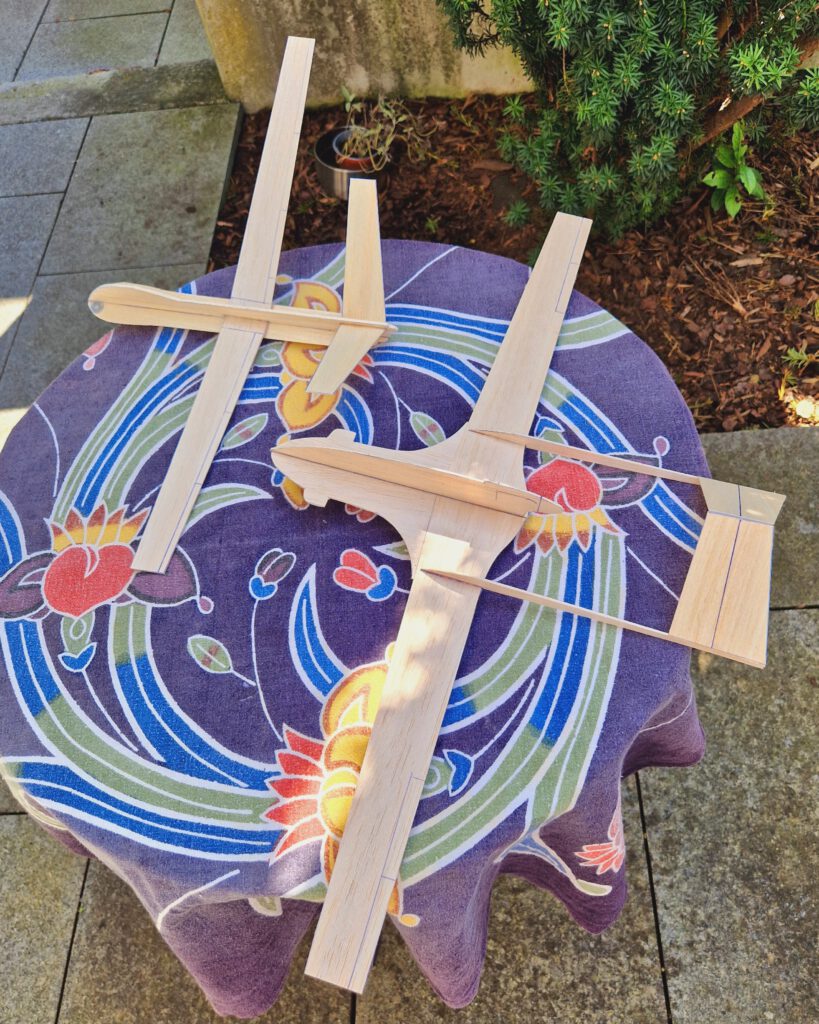
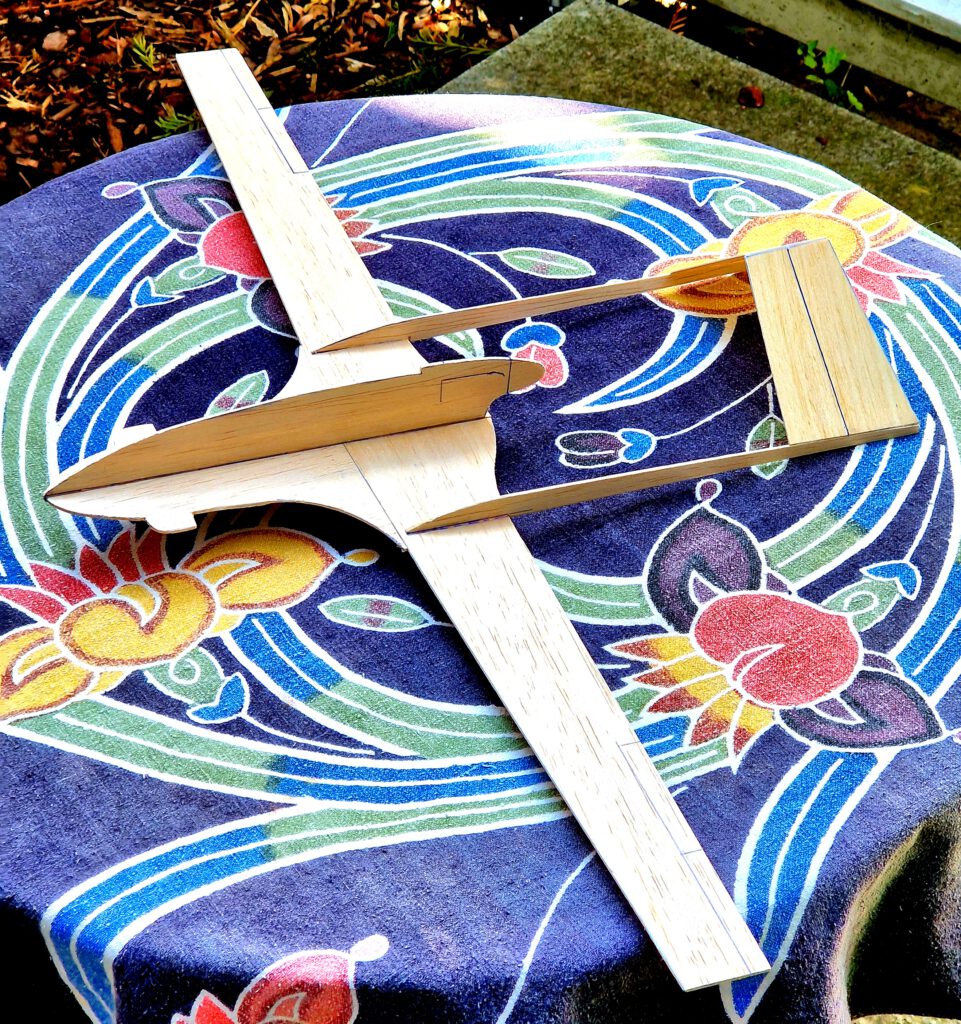
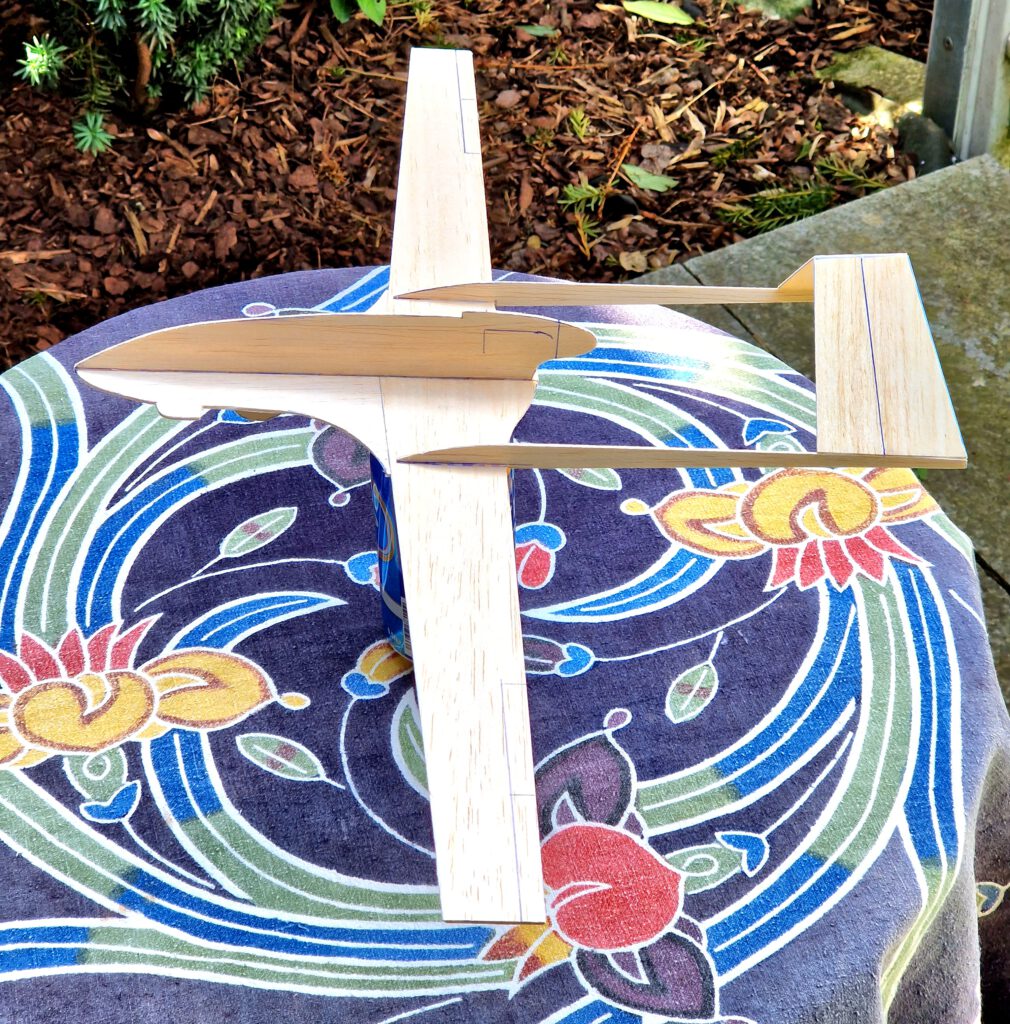
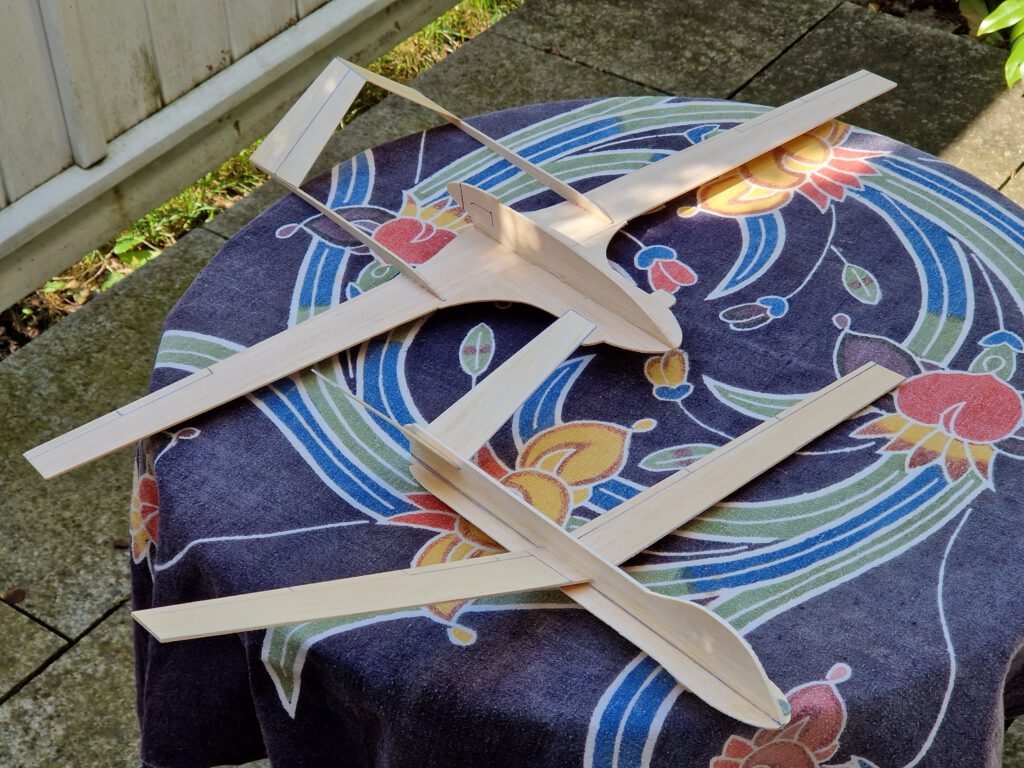
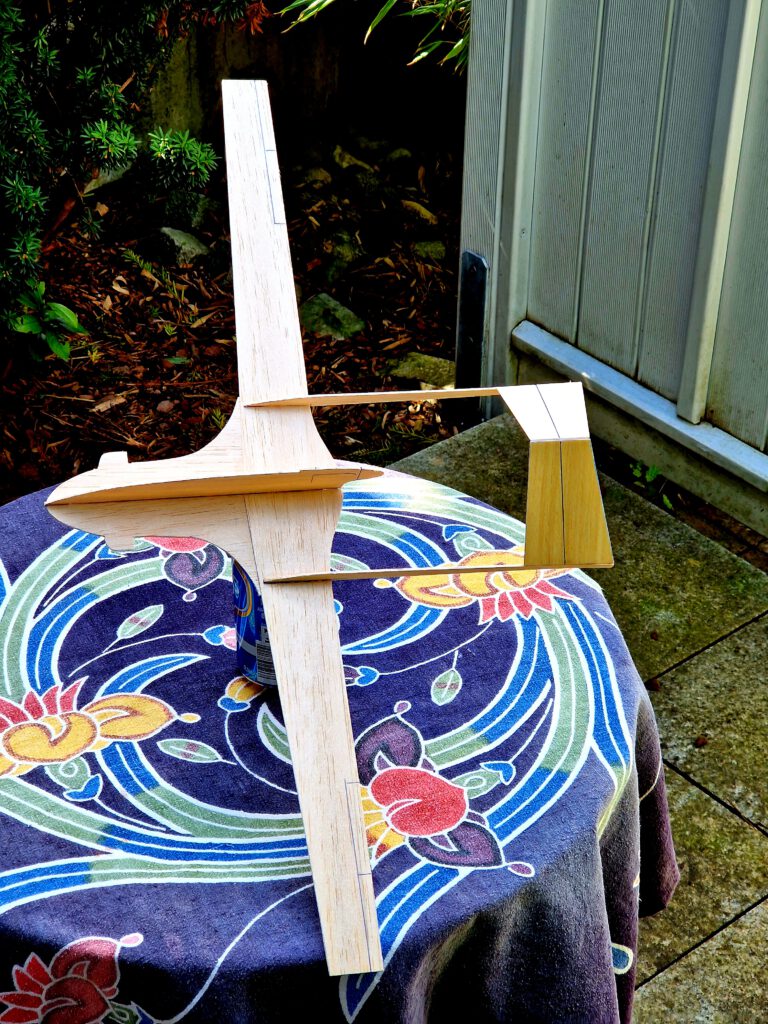
Building the balsa sheet chuck glider Bayraktar TB-2.
Materials:
Fuselage: B 1.5; wings: B 1.5; booms: B 1.5; empennage: B 0.8; ballast: steel or lead 2.5 grams / 0.1 oz.
Assembly:
Cut out balsa parts in accordance to plan. Cut slots into fuselage part (photo). Sand well. Transfer outlines of rudders, elevators, flaps etc. from paper to wood with pen (photo).
Wing:
Cut boom slots according to plan on each wing half (photo). Fix one wing half on your building board and cement front part to it (photo); repeat same procedure with the other wing half; set apart and continue with the fuselage.
Fuselage:
Strengthen belly radardome with an ample amount of extra cement on one side. Let dry. Same procedure on the other side.
Cement right wing into fuselage slots at a right angle (90°). Let dry (photo). Now repeat this with left wing half. Put aside and let dry (photo).
Booms:
Cement booms on wing-fuselage-unit. Visual check twice. Everything must be symmetrical (photo).
Final Assembly:
Cement both V-tail parts at their slimmer sides (photo). Let dry.
Underlay inverted V-tail with cardboard or scratch balsa. Broader sides of the V-tail parts sit now on rear ends of booms. Diligently check symmetry. Fix with needles and cement (photo). Let dry thoroughly.
Use small piece of lead or scrap metal to balance model at given position (photo).
Remember correct center of gravity (CG) is essential for successful flights.
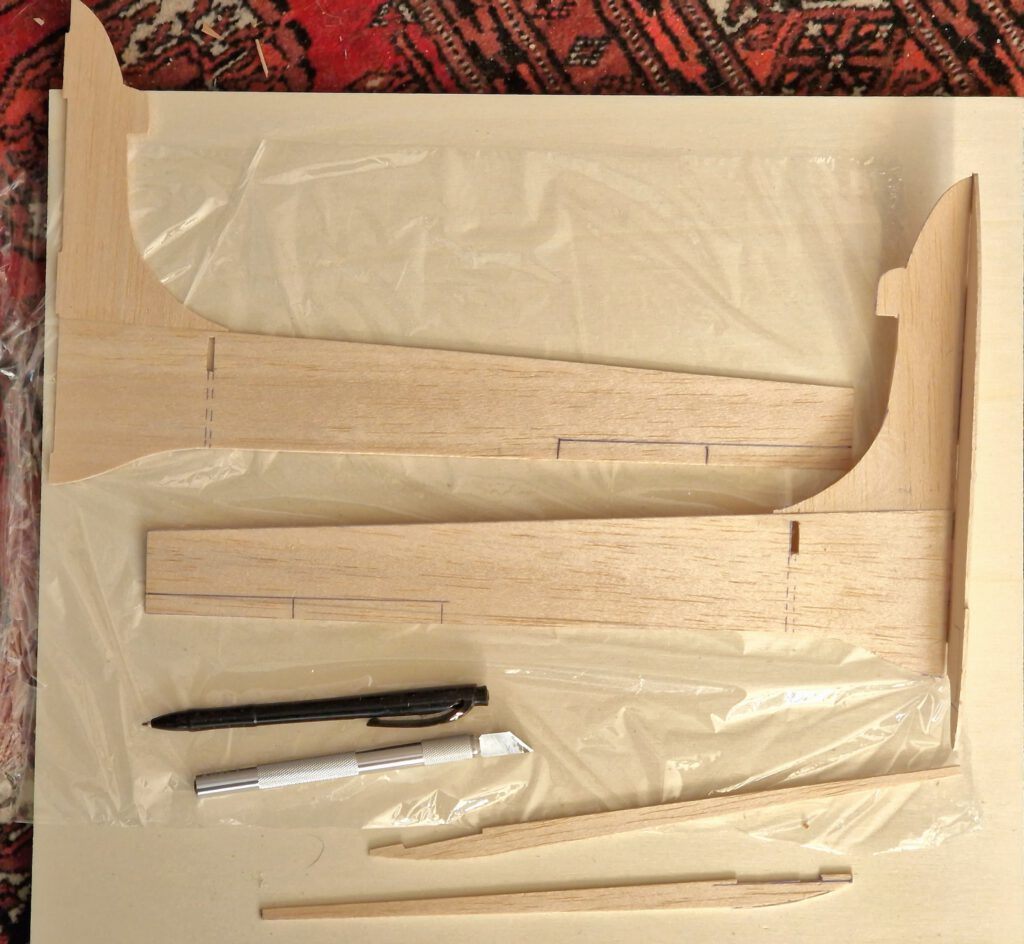
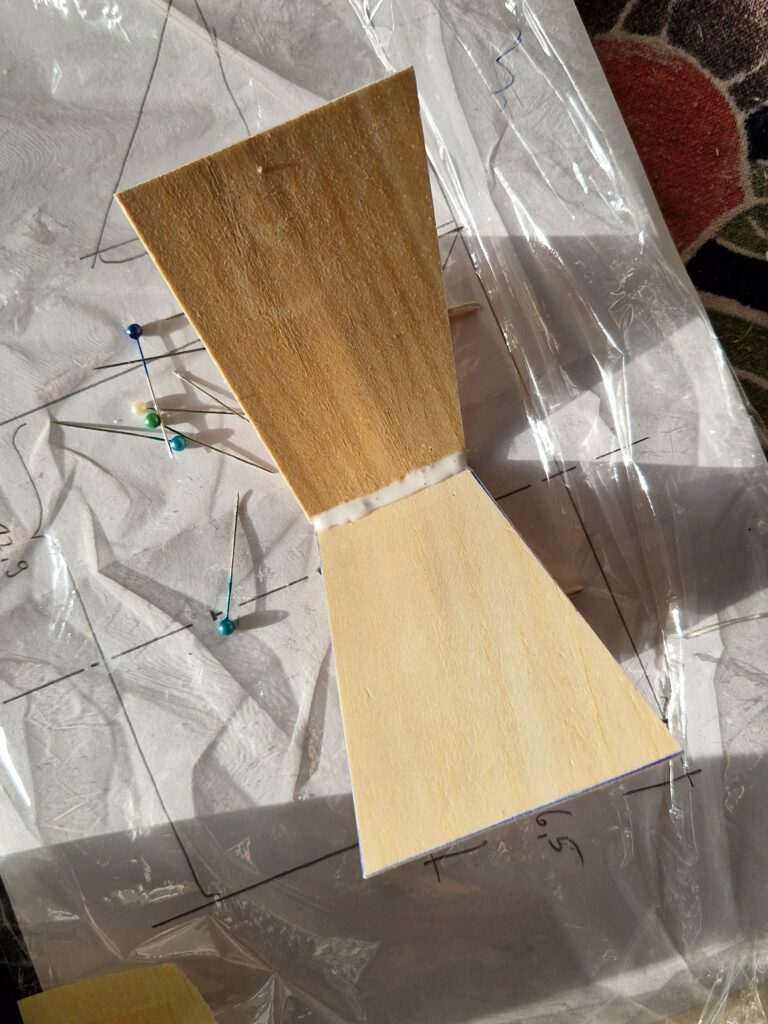
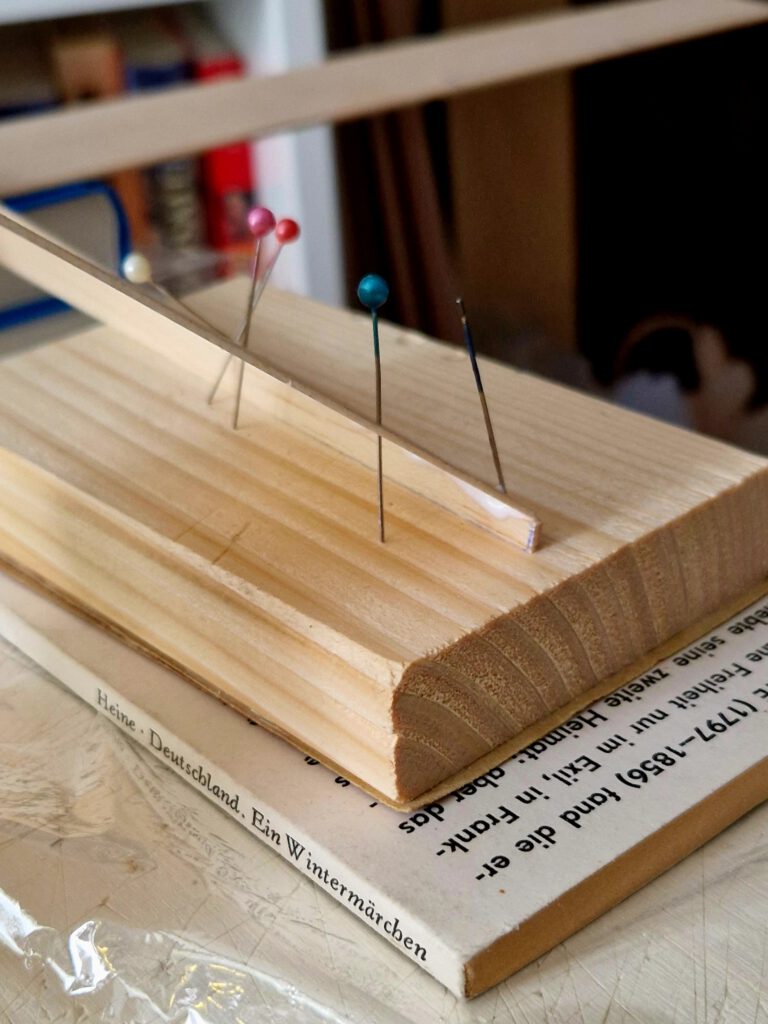
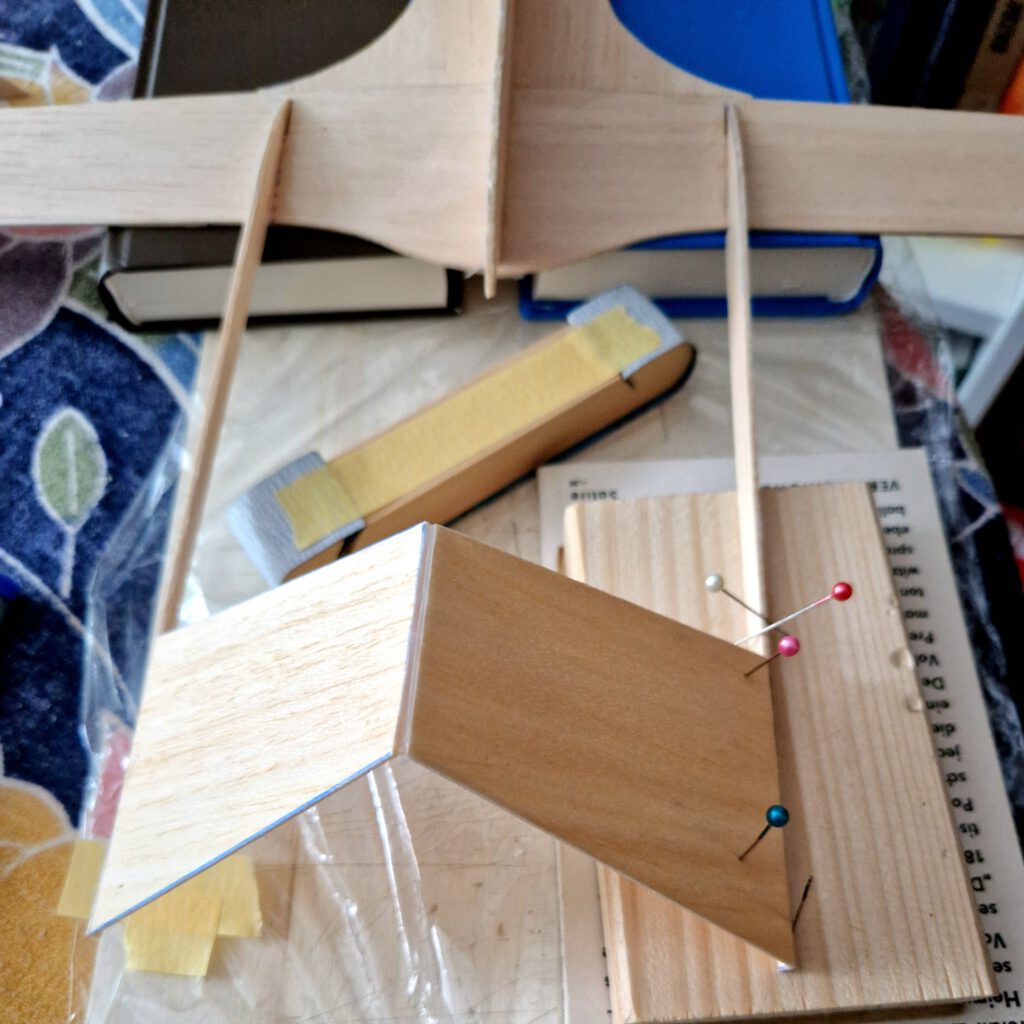
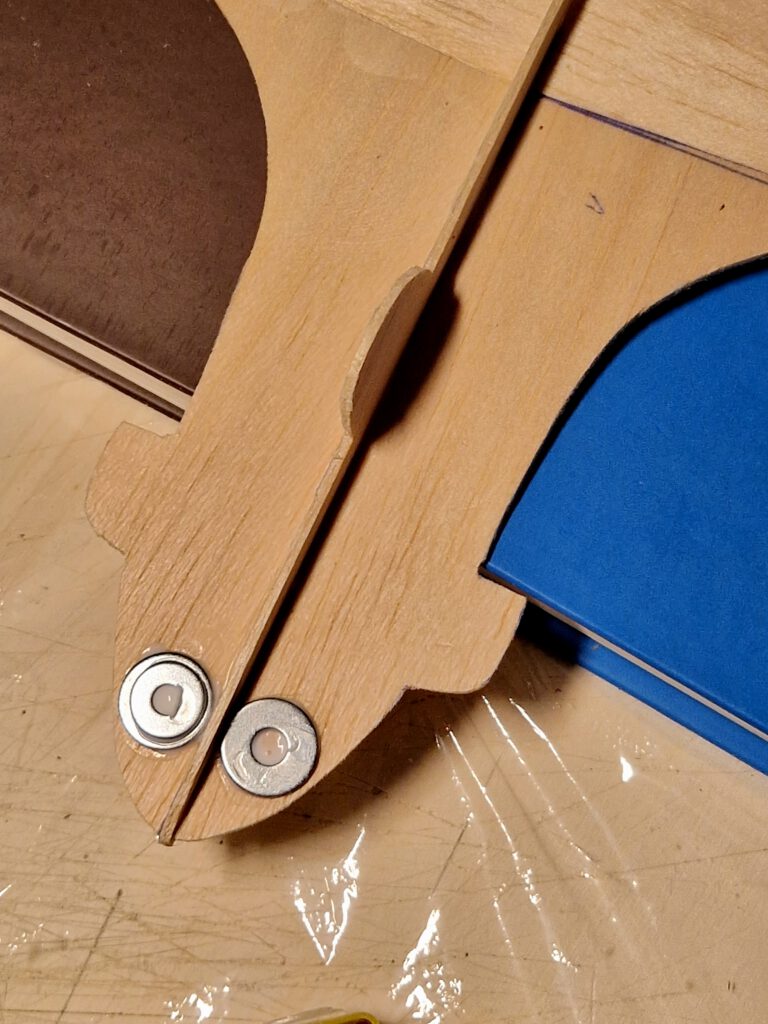
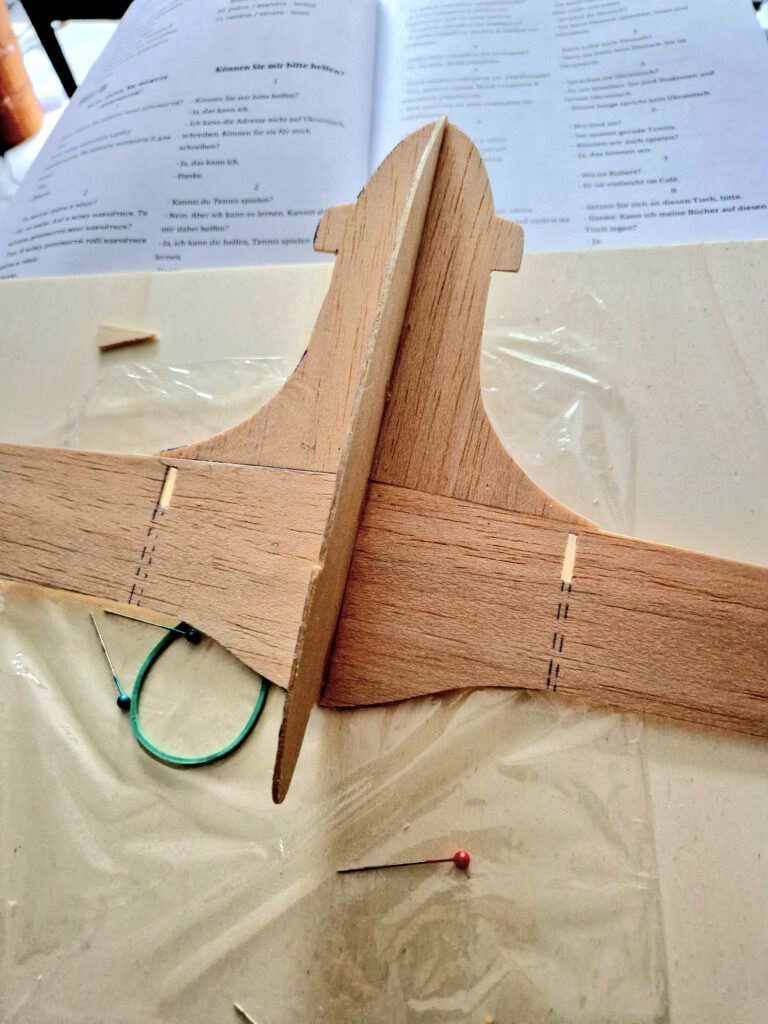
Size bol başarılı uçuşlar diliyorum! (¡Muchos vuelos exitosos!)

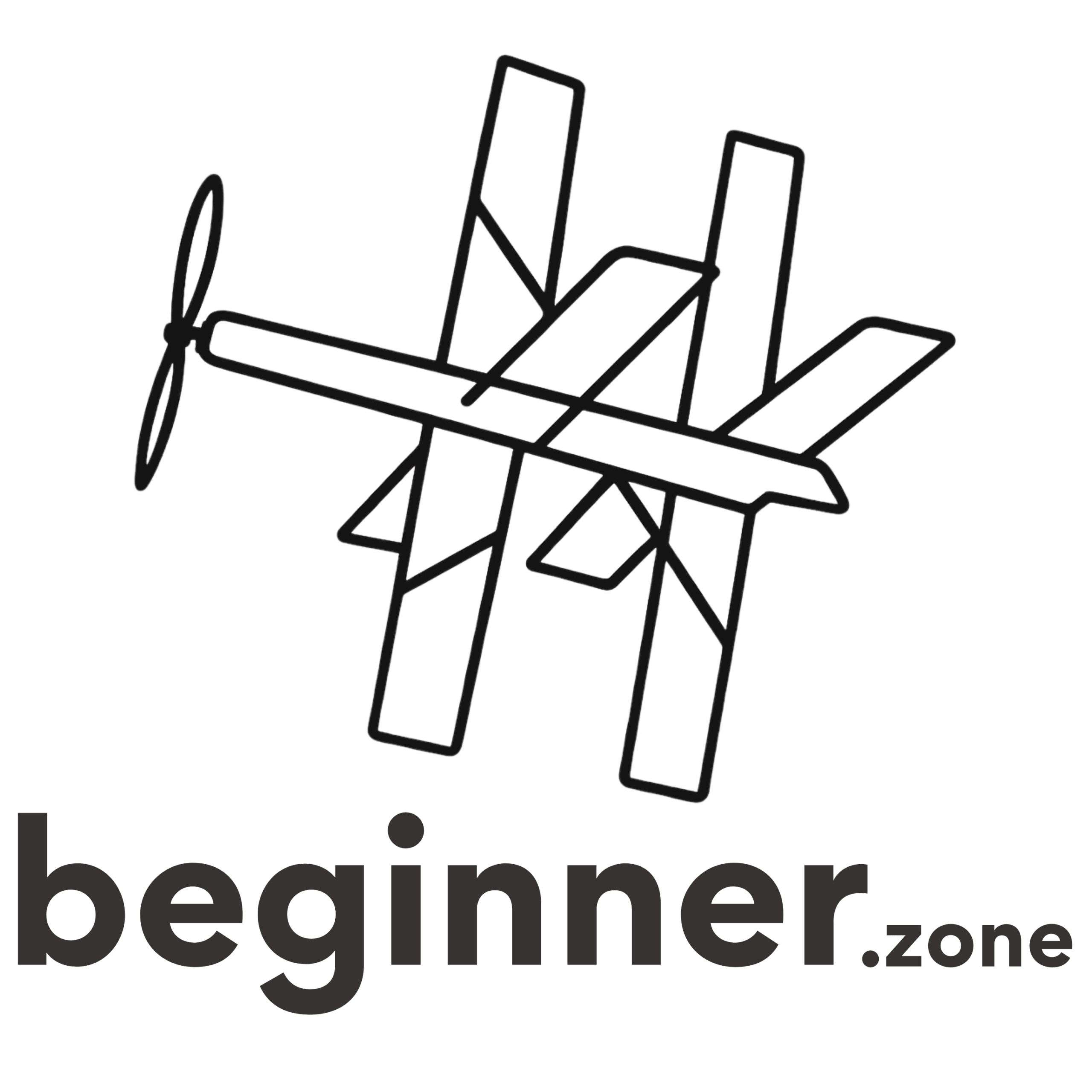
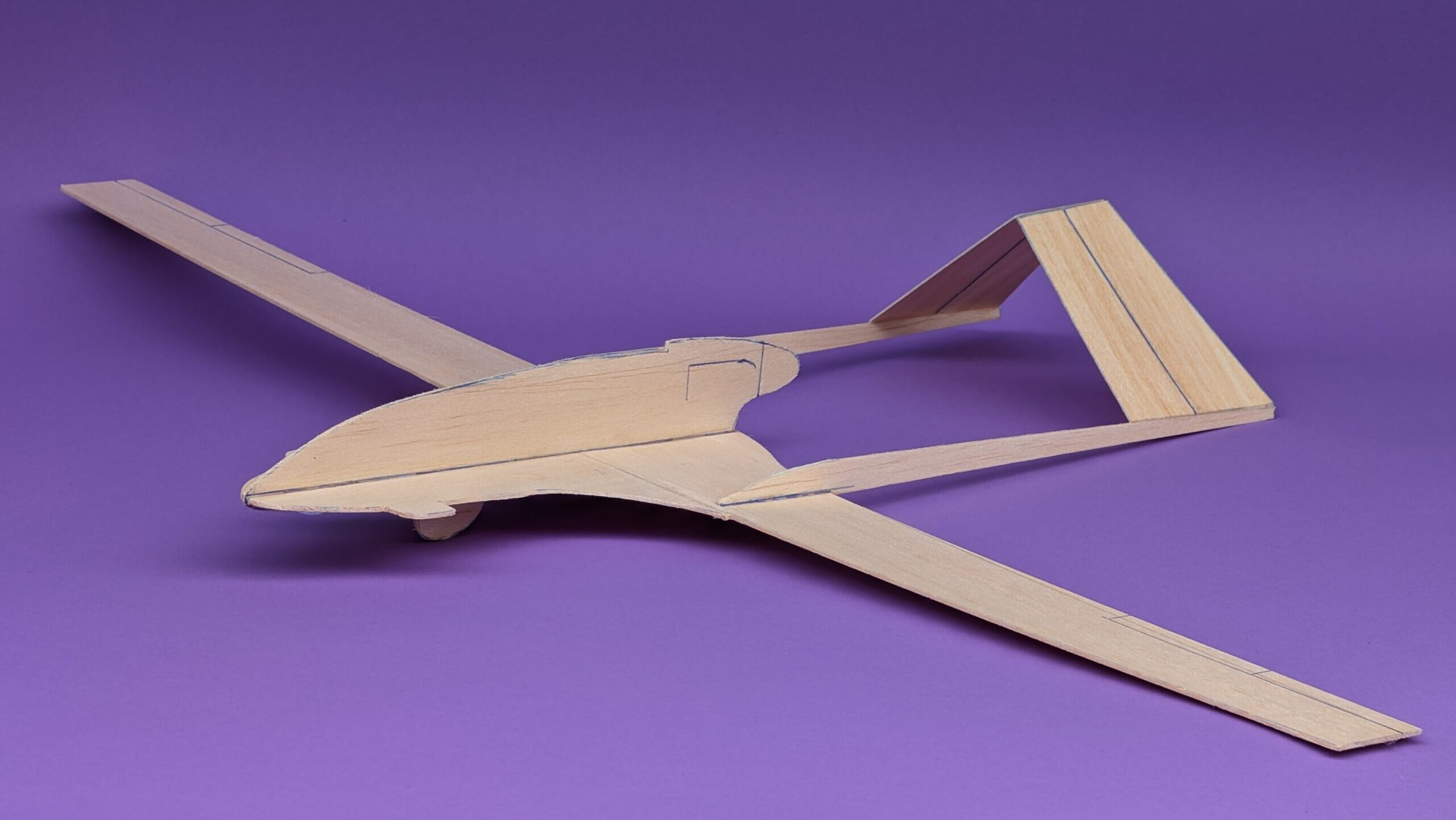
Leave a Reply